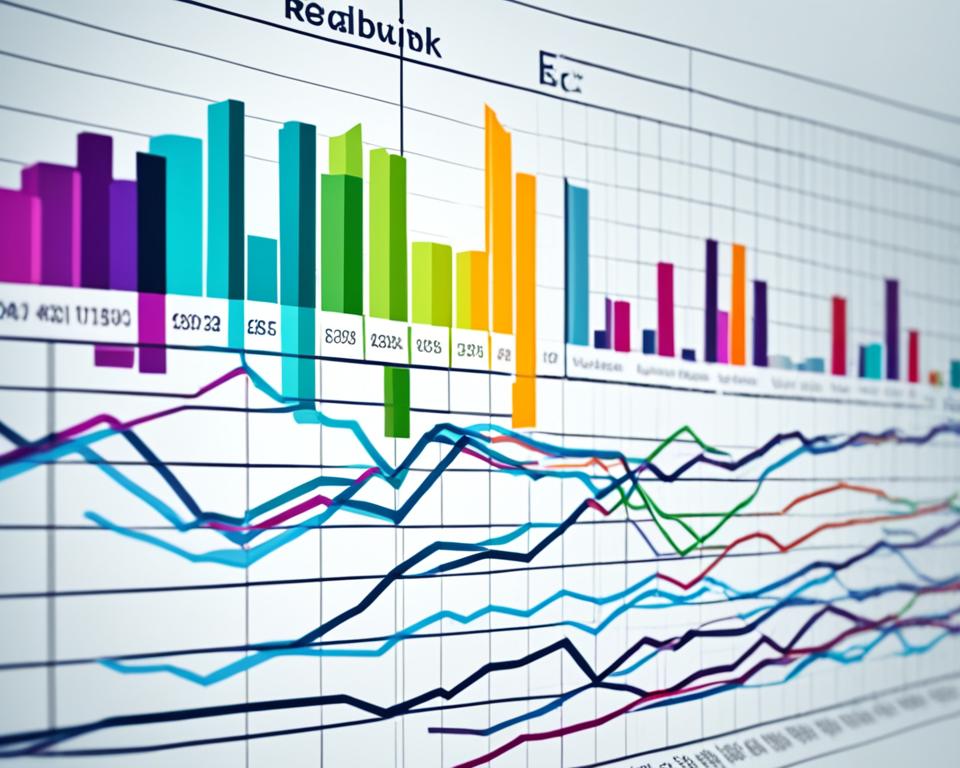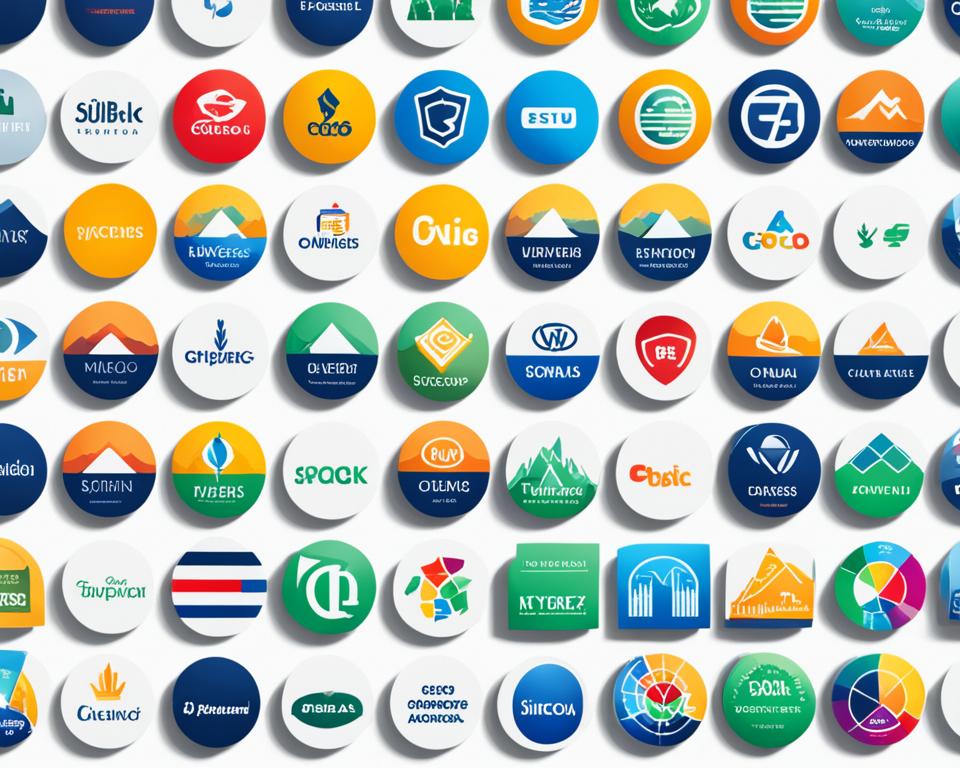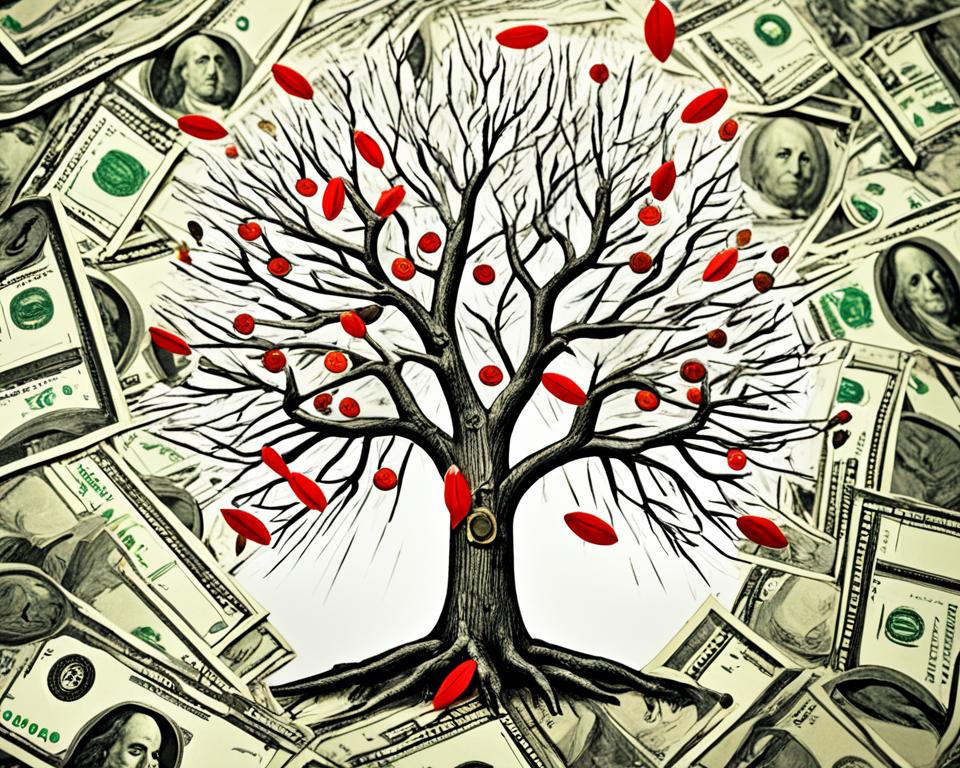Embarking on the journey of dividend investing can feel like navigating a labyrinth, but fear not – you’re not without a map. Understanding the hallmarks of reliable dividend-paying stocks is essential in creating a portfolio that not only grows wealth but also offers a cushion against inflation, unlike traditional bonds. By building knowledge on the best dividend investing tips, you take a proactive step towards financial empowerment. Let’s dive into the indicators that signal whether a company is likely to continue rewarding its shareholders with dividends.
Key Takeaways
- Seek out dividend stocks from companies with a consistent record of profitability and long-term earnings growth expectations between 5% and 15%.
- Strong cash flow is critical to support consistent dividend payments, so prioritize companies with robust cash generation.
- Debt can be a dividend disruptor; steer clear of companies with daunting debt-to-equity ratios exceeding 2.00.
- To bolster your investments, keep an eye on broader market and sector trends that may impact the future of your chosen companies.
- Buy into dividend-paying companies before the ex-dividend date to ensure you receive the upcoming dividend.
- Remember, the most sustainable and best dividend stocks are not just about the present payout but also the growth potential and overall health of the company.
Understanding Dividend Investing and Its Appeal
Delving into the world of stocks, dividend investing emerges as a strategy that seeks not just capital appreciation but also a stream of income. As you explore the tenets of dividend stock analysis and leverage tools like a dividend yield calculator, you’ll find that the wisdom of dividend growth investing lies in the dual pursuit of immediate returns and future wealth expansion. The journey to financial growth through dividends involves deciphering the complexities of the stock market and identifying companies that promise not only a steady dividend but the potential for an appreciating yield.
What Is Dividend Investing?
You’re investing in a slice of a business when you acquire dividend-paying stocks. Beyond just ownership, these stocks present a slice of the profits, distributed in dividends. Such companies often stand on a foundation of financial stability and have a history of distributing a percentage of their gains back to investors. Earmarking a part of your portfolio for dividends means you are not entirely reliant on the whims of market prices for your returns.
The Benefits of Accumulating Wealth through Dividends
The allure of dividends is multi-fold. As you receive these periodic payments, you can choose to reinvest them, a strategy that primes your portfolio for compound growth. Over time, the dividends from high dividend stocks can purchase more shares of the same or different stocks, enhancing your potential returns and enlarging your investment base. This strategic reinvestment acts as a bulwark against the volatility of the markets and the erosive nature of inflation on purchasing power.
- Dividend payments reflect a share of the company’s profit and represent a tangible return on your investment.
- Reinvested dividends spark the power of compounding, which can significantly boost total returns over the long term.
- Regular dividends can provide a steady income stream, making it a favored strategy for retirees and those seeking consistent cash flows.
- Companies with a history of paying dividends often imply financial health and sustained performance, making them attractive for dividend growth investing.
How Can Investors Find Reliable Dividend-Paying Stocks?
As you carve out a financial plan with a focus on generating steady income, understanding how to identify top dividend-paying companies is crucial. In a landscape of endless investment choices, reliable high dividend stocks are akin to lighthouses, offering guidance and safety for your investment journey.
No need to chase after the highest yield if it compromises the reliability you seek. Smart investors prioritize more than just the current dividend amount; they dig deeper into the company’s historical performance and future growth potential. Let’s examine what constitutes a company’s capability to offer trustworthy dividends that can foster your investment growth over time.
-
Profitability Track Record: Look for companies that consistently report profits. A company’s history of profitability is indicative of its ability to sustain and potentially increase its dividend payouts.
-
Earnings Growth: Seek out companies with stable long-term earnings growth expectations—typically, a range between 5% and 15%. Companies with massive growth rates may not maintain a steady dividend if earnings fluctuate significantly.
-
Dividend History: Evaluate the length of time a company has been paying dividends. A history of dividend payments, particularly those that grow over time, is a tell-tale sign of reliability.
-
Cash Flow Strength: Strong cash flow is the backbone of dividend payments. Analyze whether the company generates sufficient cash flow to cover its dividends comfortably.
-
Avoiding ‘Dividend Traps’: Be wary of excessively high dividend yields that could signify underlying issues, such as a ‘dividend trap,’ where a company may be at risk of cutting dividends in the future.
Analyze with a critical eye and an emphasis on future stability to ensure your dividend investments align with your goals. Your journey to attaining top dividend-paying companies should be paved with research, scrutiny, and a strategic approach that champions both yield and growth prospects.
Key Factors in Identifying Top Dividend-Paying Companies
As an investor aiming to enhance your portfolio with the best dividend stocks, it’s essential to evaluate the fundamentals that underpin a company’s capacity to pay dividends. This scrutiny goes beyond surface-level statistics to an assessment of core financial health indicators—factors that signal the sustainability of dividend returns. In this section, we’ll delve into the criteria that distinguish top dividend-paying companies, offering you focused dividend investing tips to refine your investment choices.
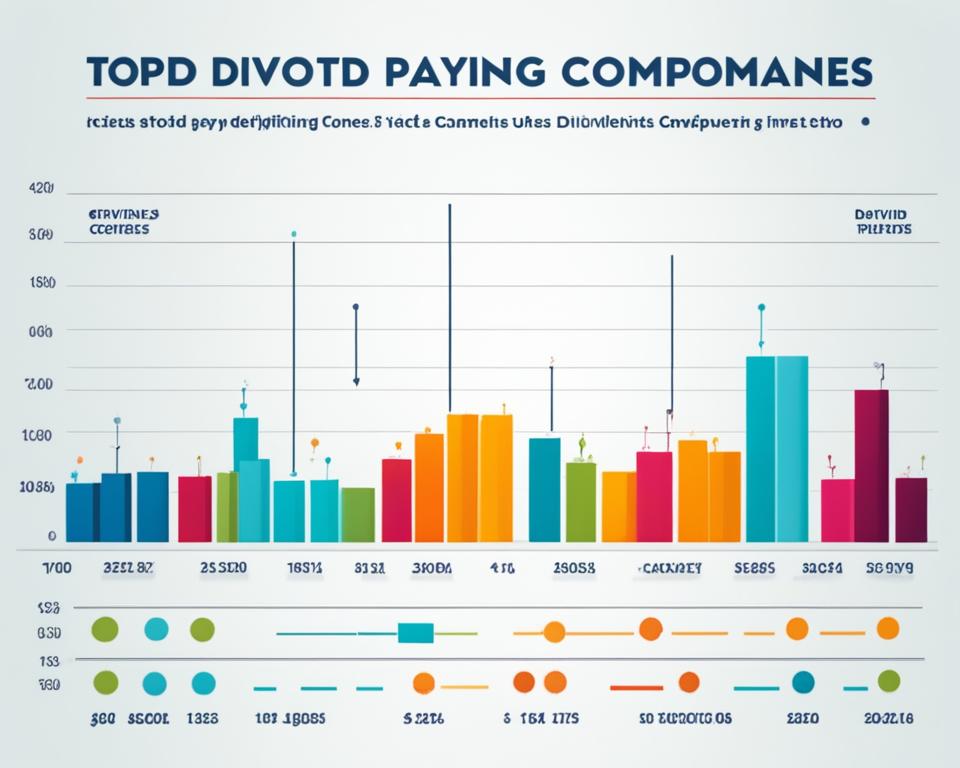
Assessing Long-term Profitability and Cash Flow
Dividend stability often correlates with a company’s long-established pattern of profitability and cash flow generation. Companies that have consistently demonstrated the ability to grow earnings are more reliable when it comes to maintaining, or even increasing, their dividend payouts. Hence, it’s not enough to look at high yields as a marker of a good dividend stock; one must examine the undercurrents of enduring financial performance that support these yields.
The Importance of Earnings Growth Expectations
Equally crucial is a company’s future outlook, particularly expected earnings growth, typically ranging from 5% to 15%. While rapid growth can be dazzling, steadiness within this range is more indicative of the company’s ongoing capacity to reward shareholders without facing the disruptive earnings disappointments often accompanied by hyper-growth. Companies operating in this ‘sweet spot’ are likely to achieve a balance between risk and return, making them prime candidates for your dividend-based investments.
Snapshot: Comparing Dividend Reliability Indicators
| Financial Indicator | Role in Dividend Reliability | Investor Consideration |
|---|---|---|
| Consistent Profitability | Baseline for regular dividends | Assess past performance across economic cycles |
| Earnings Growth Expectation | Indicator of continuous growth | Should be sustainable, typically between 5% and 15% |
| Cash Flow Strength | Affirms ability to pay dividends | Check for consistent cash generation exceeding dividend obligations |
| Historical Dividend Increases | Signals commitment to shareholder returns | Look for at least a five-year track record of dividend growth |
By orienting your due diligence around these pivotal factors, you explicitly position yourself to discover and invest in the best dividend stocks, capable of delivering not just current yield but also prospective appreciation. Approach dividend investing with a blend of analytical rigor and strategic foresight, and you’ll be well on your way to constructing a resilient and rewarding income-generating portfolio.
Critical Financial Ratios for Dividend Stock Analysis
As you hone your skills in identifying the best dividend stocks for your portfolio, it’s important to become adept at reading certain financial ratios. These ratios, such as the debt-to-equity ratio, serve as barometers of a company’s fiscal health and are predictors of its ability to maintain or increase dividend payouts. Let’s dissect the essentials of these financial metrics and understand how they can aid in smart investment decision-making.
Debt-to-Equity Ratios: A Red Flag for Investors?
When you engage in dividend stock analysis, the debt-to-equity ratio should not be overlooked. This ratio provides insight into how heavily a company is leveraged, with a higher ratio indicating more debt relative to equity. A common threshold investors watch for is a ratio above 2.00, which many consider a red flag – signaling potential distress that could hinder the company’s dividend-paying capability. As you survey various investment opportunities, paying close attention to this ratio could save you from the pitfalls associated with excessive corporate debt.
Utilizing Dividend Yield Calculators for Smart Investment
Dividends are enticing, but the yield – the dividend return relative to a stock’s price – can illuminate the true value of these payouts to your investment objectives. Here’s where a dividend yield calculator becomes indispensable. By translating the annual dividend into a percentage of the current stock price, this tool empowers you to sift through potential investments to find those that meet your desired yield criteria. Smart investing isn’t just about chasing high dividend numbers; it’s about measuring those dividends against the stock price for an accurate assessment of your potential return on investment.
| Company | Annual Dividend | Stock Price | Dividend Yield |
|---|---|---|---|
| Company A | $1.20 | $30.00 | 4.00% |
| Company B | $2.00 | $100.00 | 2.00% |
| Company C | $0.60 | $10.00 | 6.00% |
Now equipped with insight into these financial ratios and tools, you’re in a better position to filter dividend-paying stocks that align with your investment strategy, ensuring both current income and future capital growth. Remember to yield to wisdom in your quest for dividend profitability.
Recognizing the Potential of Dividend Aristocrats
When you’re building a dividend-focused portfolio, the prestige of Dividend Aristocrats often stands out. These are not your average stocks; they’re the cream of the crop among top dividend-paying companies. For over a quarter of a century, these financial stalwarts have not only paid dividends but have raised them year after year. As you eye these beacons of reliability, consider the broader implications – they are not just symbols of consistent returns, but bastions of financial discipline capable of navigating through various market conditions.
Delve into the realm of these elite companies, and you’ll understand why they epitomize investment stability. Dividend Aristocrats usually hail from robust industries, providing goods and services always in demand, which translates into steady cash flow. This predictable financial flow is the lifeblood of regular dividend increases, resonating with the strategic intents of long-term investors who prize steady and growing income streams.
- Resilience over time: Dividend Aristocrats are tested and proven entities that have demonstrated financial vigor and resilience, making them attractive to investors focused on long-term wealth growth and preservation.
- Growth prospects: It’s not just the present dividend yield that counts but also the potential for growth. These companies offer the promise of increasing dividends, which can lead to greater yield on your initial investment as time progresses.
- Market leadership: Belonging to well-established industries, these entities maintain a leading market position, allowing them to manage resources effectively in a manner that benefits shareholders consistently.
The hallmark of Dividend Aristocrats lies in their ability to provide a clear forecast of what investors might expect regarding future dividend payments. This ability is a testament to their robust strategic planning, execution, and commitment to returning value to shareholders. As you consider these leading firms, remember that investing in them is as much about their historical performance as it is about their capacity to adapt and thrive in the future economic landscapes.
In conclusion, recognizing the intrinsic value of Dividend Aristocrats is an essential step in constructing a resilient income-generating portfolio. They are a testament to the prowess of top dividend-paying companies and serve as a guiding light for investors seeking reliable growth and steady income.
Deciphering the Ex-Dividend Date and Its Impact
For investors, striking the right timing can be the keystroke in a symphony of strategic investing. Particularly with dividend investing, one date dances at the center stage—the Ex-Dividend Date. Understanding its beat and rhythm is paramount for those looking to tap into the harmony of dividends, especially when scouting for the best dividend stocks. Here’s how this crucial date shapes your dividend collection prospects.
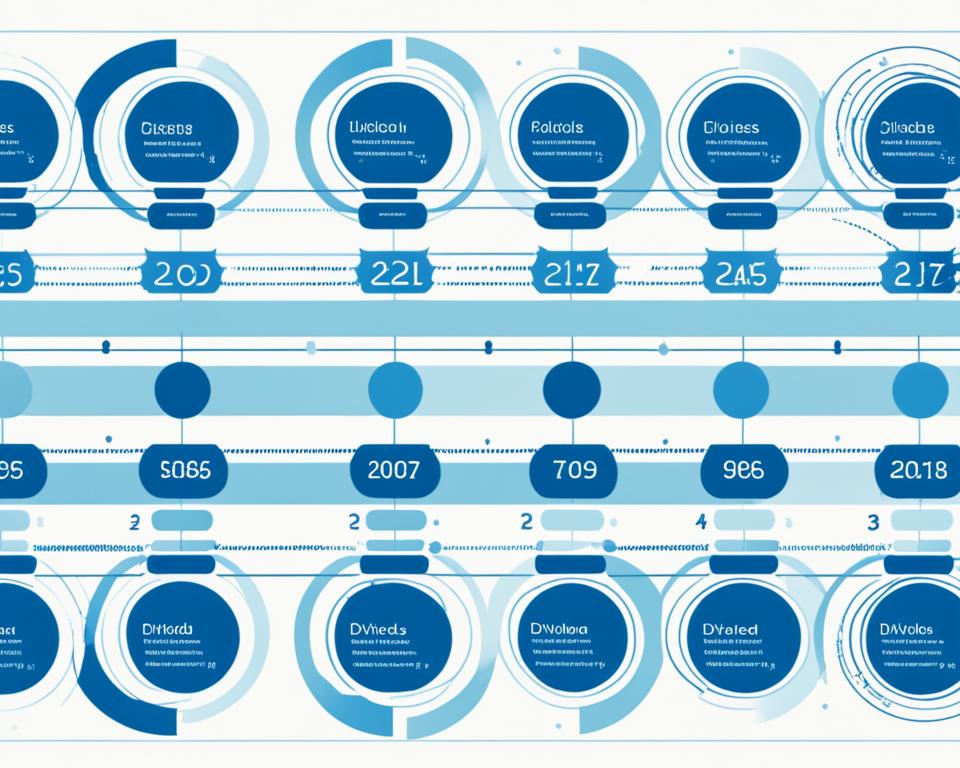
Definition and Importance of the Ex-Dividend Date
The ex-dividend date marks the crescendo in the dividend payout process—a deadline ticking with implications for your expected income. This is the cut-off date set by the company beyond which the stock purchased does not carry the right to receive the declared dividend. Simply put, if you purchase after this date, you’re tuned out of the dividend melody until the next payout.
A thoughtful approach to the ex-dividend date is akin to reserving your seat at a dividend concert. It confirms your name is on the list when the company dispatches those coveted dividend checks, based not on ownership at payout time but rather on ownership before this pivotal date.
Strategic Timing When Purchasing Dividend Stocks
Orchestrating your stock buys around the ex-dividend date weaves you firmly into the tapestry of dividend recipients. Buying before this date ensures your eligibility for the upcoming distribution, making it a strategic maneuver in your wealth-accumulation waltz. It’s the delicate balance between investing at the moment that maximizes returns and resonates with the rhythm of calculated, income-generating investments.
Mark calendars, set alerts, synchronize with market tempos—whatever it takes to keep this date in clear sight. For every investor reaching for the best dividend stocks, respecting the ex-dividend date can mean the difference between capitalizing on a company’s distributions or merely watching the performance from the sidelines.
Employing Dividend Stock Screeners for Efficient Selection
As you delve into the world of dividend investing, the abundance of choices might seem overwhelming. This is where a dividend stock screener becomes an invaluable tool, helping to sift through the numerous options and identify those that align with your investment goals. By setting specific criteria such as dividend yield, payout ratios, and earnings growth, you’re able to efficiently shortlist stocks that meet your requirements for yield and growth potential. Let’s explore how leveraging a screener can be one of the most practical dividend investing tips to elevate your portfolio’s performance.
Imagine having the ability to filter out companies that don’t meet your threshold for stability or those with yields that seem too good to be true—potentially signaling a future cut in dividends. A screener lets you perform this essential weeding process, leaving you with a list of contenders that have passed your set prerequisites. This is much like panning for gold; shaking away the silt to reveal the valuable nuggets.
| Financial Metric | Why It Matters | How to Use It in a Screener |
|---|---|---|
| Dividend Yield | A measure of the annual dividend in relation to the stock’s price, indicating the income you’ll receive from your investment. | Set a minimum yield percentage to ensure your investments meet your desired income level. |
| Payout Ratio | Shows the percentage of earnings paid out as dividends and can indicate sustainability of the dividend. | Select a range that suggests a manageable payout without compromising company growth. |
| Earnings Growth | Indicates the company’s profitability trend and potential for future dividend increases. | Look for companies with consistent earnings growth, avoiding those with erratic spikes or declines. |
By utilizing a dividend stock screener, not only do you save time, but you also invest effort more strategically. Instead of perusing every single potential stock, screeners refine your focus to a curated selection of securities that are much more likely to serve your dividend investment strategy. The saying ‘time is money’ rings incredibly true here—screeners enable you to be both time-efficient and smart with your capital. Incorporate the use of a screener into your dividend investing tips arsenal for a smart, focused approach to selecting solid dividend-paying stocks.
As you continue your journey in dividend investing, remember that using a screener is just the first step. The best investors combine these informative tools with their own research and intuition. This builds a well-rounded approach to selecting the best dividend stocks that are likely to contribute to a profitable and sustainable income stream in the long term.
Dividend Growth Investing: The Path to Increasing Returns
Embarking on the journey of dividend growth investing can pave the way for increasing returns over time. This approach shifts the focus from momentary high yields to the progressive growth of dividend payments, reflecting a company’s financial health and its enduring commitment to share profits. Indeed, companies that exhibit a pattern of increasing dividends present compelling investment opportunities that could lead to more substantial and sustainable returns for your portfolio.
Checking Historical Track Records of Dividend Increases
When assessing potential high dividend stocks for your investment portfolio, scrutinizing their historical dividend performance is greatly insightful. It is the companies with a consistent track record of not just maintaining but regularly increasing their dividends that often stand out as worthy candidates. This behavior is indicative of a healthy financial foundation and a reliable management team capable of navigating economic cycles with shareholder interest in mind.
A robust history of dividend growth is characteristic of companies with sustainable business models. By investing in such firms, you are not merely securing current yields but anchoring your portfolio to benefits that amplify with time. Hence, carefully reviewing the past dividend patterns is an essential aspect of dividend stock analysis, as it shapes expectations for future financial return.
Steer Away from High Dividend Yields with Hidden Risks
While extraordinary high yields might appear attractive at first glance, they often come with hidden risks that could undermine your investment objectives. Yields that peak significantly above industry averages can serve as red flags for underlying issues within a company. These are the so-called ‘dividend traps’ notorious for entrapping investors with the allure of immediate income at the expense of long-term growth and stability.
Wise investors maintain a balanced perspective, staying vigilant against the seduction of unusually high yields and instead prioritize investments in businesses showcasing sustained growth, competitive advantages, and strategic management. By fostering a portfolio that marries healthy dividend yields with solid fundamentals and growth prospects, you set the stage for reliable income and the potential for capital appreciation.
As part of your dividend growth investing strategy, always blend evaluations of yield with an assessment of company health and prospects. It’s this balanced approach that can help ensure your dividend investments contribute positively to your financial growth, offering a shield against volatility and the confidence of sound, progressive investment choices.
Ensuring Tax Efficiency with Dividend Investments
Dividend investing can augment your portfolio with a steady stream of income, especially when you opt for top dividend-paying companies. However, not all dividends are taxed equally, and understanding this can have a significant impact on your investment’s tax efficiency. With smart planning and tools like a dividend yield calculator, you can navigate the taxation landscape to maximize your returns.
Differentiating Between Qualified and Non-Qualified Dividends
Two main types of dividends impact your tax bill: qualified and non-qualified. Qualified dividends benefit from reduced tax rates, mirroring those of long-term capital gains. Depending on your overall income, you could pay as little as 0% or up to 20%. Non-qualified dividends do not receive this preferential treatment and are taxed at your regular income tax rate. Identifying which dividends qualify is therefore crucial to formulating an investment strategy that optimizes after-tax returns.
Taxation of Dividends and IRS Reporting Requirements
When tax season arrives, dividends must be reported to the IRS—qualified and non-qualified alike. You’ll receive Form 1099-DIV from each company that paid you dividends throughout the year, which outlines your total dividends and specifies which are qualified. Reporting dividend income accurately, using line 3a of Form 1040, ensures compliance and allows you to take advantage of the lower tax rates on qualified dividends. Keeping these considerations in mind can result in a more tax-effective dividend investment approach.
The Significance of Sustainable Dividends
When it comes to building your investment portfolio, the allure of high dividend stocks can be compelling. However, smart investors know that the true value lies in sustainable dividends—those that can be maintained or grown over time. But how can you distinguish a genuinely sustainable dividend from an attractive yet potentially fleeting yield?
How to Determine Dividend Sustainability
To ensure the longevity of your investments, look at a company’s track record of performance, their current financial health, and their competitive advantage within the industry. Companies poised for sustainable dividends often have a clear set of growth drivers, manageable levels of debt, and are helmed by effective management teams. These factors are indicative of a company’s resilience and signal a greater likelihood of maintaining dividends even in economically strenuous times.
Avoiding the Pitfalls of High Yield Dividend Traps
While high yields might initially grab your attention, savvy investors steer clear of what’s often referred to as “dividend traps.” These high yield offerings can be misleading, as they may be unsustainable in the long run. This unsustainability could stem from the company’s lack of long-term profitability, excessive debt burdens, or a challenging competitive landscape that the company faces.
To avoid these high yield traps, perform a meticulous review of the company’s financial statements, assessing their payout ratios and long-term earnings potential. Lack of substantive growth, or yields significantly higher than industry averages, may point towards instability and the threat of future dividend reductions or suspensions—events that typically precipitate a sharp decline in share price and can lead to substantial losses in your investment capital.
| Indicator | What It Signals | Action for Investor |
|---|---|---|
| Debt-to-Equity Ratio Below 2.00 | Fiscal restraint and lower risk of dividend cuts | Assess as potential investment for sustainable dividends |
| Long-term Earnings Growth Projections | Future profitability and dividend-paying ability | Prioritize based on consistency and realism of growth forecasts |
| Historical Dividend Stability or Growth | Commitment to returning profit to shareholders | Consider as an indicator of reliable dividend payments |
| Payout Ratio in Relation to Profits | Dividend sustainability | Seek lower payout ratios that indicate room for dividend growth |
To fortify your portfolio with investments that offer sustainable dividends, it’s crucial to maintain a proactive and discerning approach. Favor corporations that demonstrate solid business models, financial stability, and pragmatic management practices over those with seemingly lucrative yet uncertain high yields. With a steady focus on the long-term horizon, you’ll be better positioned to reap the rewards of sustained, and potentially growing, dividend income.
Portfolio Allocation: Balancing Dividend Stocks and Risk
When embarking on dividend growth investing, the composition of your investment portfolio is key to balancing potential gains with prudent risk management. Your portfolio allocation should reflect a shrewd balance between the pursuit of steady dividend income and the diversification necessary to cushion against market volatility. Let’s explore how to allocate your assets to tap into the enduring value of dividends while keeping an eye on risk.
Considerations of age, income level, and investment horizon are fundamental when incorporating dividend stocks into your portfolio. For instance, if retirement is on the horizon, you may lean towards a higher allocation in dividend-yielding stocks for consistent cash flow. On the flip side, if you’re in the early stages of wealth accumulation, a balanced mix of growth stocks and dividend-payers can offer both appreciation potential and income.
Moreover, the practice of dividend growth investing should not be a narrow path but one that encompasses various sectors and investment vehicles. A blend of individual dividend stocks, ETFs, and mutual funds can provide the necessary diversification, minimizing the risks linked to any single company and mitigating industry-specific downturns that might otherwise negatively impact your investments.
| Investor Profile | Income Level | Portfolio Allocation |
|---|---|---|
| Growth-oriented Investor | High | Moderate allocation in dividend stocks complemented by growth stocks |
| Income-seeking Retiree | Moderate | Higher allocation in dividend stocks for stable income |
| Risk-averse Individual | Varied | Conservative mix with an emphasis on blue-chip dividend stocks |
An effective portfolio allocation balances risk and return – it’s the financial equivalent of not putting all your eggs in one basket. While dividend stocks are revered for their potential to generate income, they should be integrated thoughtfully into your broader investment framework. By aligning your portfolio allocation with your personal risk tolerance and financial goals, you pave a path towards a robust and resilient investment strategy that leverages the power of dividend growth investing.
Investing in the Best Dividend Stocks: Tips and Strategies
As you refine your investment portfolio, it’s vital to consider the full picture of potential assets, particularly when targeting the best dividend stocks. It’s not just the present yield that should catch your eye but also the intrinsic value and growth potential of the stock. Let’s explore how to strike the right balance between yield and sustainable growth to maximize your long-term financial gains.
Looking Beyond High Dividend Stocks for Value
Focusing solely on stocks with the highest dividends can be akin to chasing a mirage. The savvy investor knows that true value is found when a company offers reasonable yields backed by financial health and the ability to sustain and grow dividends over time. As you engage in dividend stock analysis, scrutinize the dividend payout ratio, as it reflects the portion of earnings paid out as dividends and indicates the sustainability of payouts.
Consider also the company’s growth rate. A company that can boost its earnings over time is more likely to increase its dividends, contributing to your total return. In essence, you want your investments to be more than momentary high-income streams; you aim for a fountain that replenishes and grows.
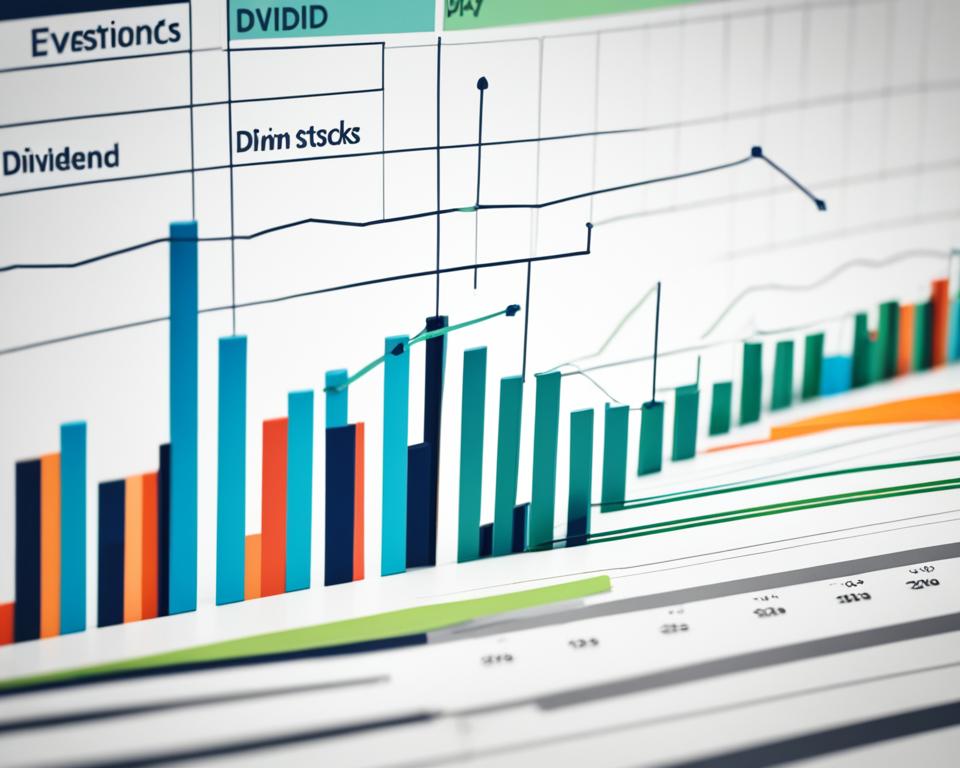
Why Dividend Growth Outperforms High Yields in the Long Run
The compounding effect of dividend growth can play an integral role in building wealth. Stocks that not only pay dividends but consistently increase them offer a hedge against inflation and can significantly enhance total returns over time. While high-yield stocks may seem enticing, they often do not maintain those payouts in the long term, especially when they face economic downturns.
Understanding this dynamic, you should look for companies with a history of increasing dividends. These companies usually have strong business models and cash flow generation that support ongoing increases in payouts—an attribute that is often reflected in their stock prices as well.
| Company Attributes | Sustainable Yield | Growth Potential |
|---|---|---|
| Strong earnings growth rate | Aligned with industry averages | Indicates potential for regular dividend increases |
| Low debt-to-equity ratio | Suggests sustainable financial structure | Promotes longevity and stability in payouts |
| History of dividend increases | More reliable than high current yields | Signals commitment to returning value to shareholders |
In essence, the journey to procuring the best dividend stocks is not about seeking instant gratification through high yields, but rather embracing a strategy that values sustainable growth. This strategic foresight is the cornerstone of a sound investment approach, gearing you towards financial success that can stand the test of time.
The Importance of Reinvesting Dividends for Compounding Growth
At the heart of a strategic investment approach is the power of compounding, a concept that becomes even more potent when applied to dividends through dividend reinvestment plans (DRIPs). These plans are an investor’s ally in turning modest dividend payouts into a significant force for wealth accumulation. They enable you to buy additional shares using the dividends you receive, setting the stage for compound growth as those new shares also generate dividends, creating a cascading effect on your investment’s value over time.
The Power of Dividend Reinvestment Plans (DRIPs)
DRIPs seamlessly convert dividend income into more shares of the issuing company, usually without brokerage fees, thereby lowering the cost of investment and enhancing yield. This automated process can expand your shareholdings without requiring additional capital input from you. Over years and decades, the compounding growth facilitated by DRIPs can transform dividends from a trickle into a torrent of financial growth, underpinning the value of consistent, long-term investing.
Automating Dividend Reinvestment to Accelerate Wealth
Many brokerages offer the convenience of automating dividend reinvestment, which ensures that no dividend income is left idle. By choosing to automatically reinvest dividends, you are embracing a set-it-and-forget-it methodology that can significantly accelerate the growth of your wealth. This strategic move is most effective within tax-advantaged accounts like IRAs and 401(k)s, where the deferral of tax liabilities allows for uninhibited compounding.
A compelling illustration of dividend reinvestment is depicted in the chart above, underlining the remarkable potential for growth when dividends are consistently reinvested. Partaking in dividend reinvestment plans is a commitment to financial foresight, an investment in the exponential growth of your portfolio’s value. The secret to harnessing this power lies not in chasing short-term gains, but in the disciplined, automated cultivation of your investments over an extended period.
Analyzing Sector Trends and Their Influence on Dividends
As you delve into dividend stock analysis, understanding sector trends becomes instrumental in identifying companies with robust dividend prospects. The economic environment in which a business operates can significantly influence its ability to consistently pay—and potentially grow—its dividends. By examining sectors poised for demand growth, investors can pinpoint potential dividend gems better positioned to maintain payouts across market cycles.
Prospecting for Dividend Gems in High-Demand Sectors
Demographic changes, like an aging population, can create lasting demand within certain sectors, suggesting opportunities for steady dividend increases. Healthcare, for one, continues to benefit from this demographic tailwind. By focusing your attention on companies in high-demand sectors, you’re more likely to uncover investments with the capacity to sustain and hike dividend payouts over the long term.
Understanding Market Cycles and Dividend Sustainability
Conversely, sectors that face significant headwinds or disruptive shifts might struggle to uphold their dividends. For instance, companies in traditional consumer goods industries may be challenged by a societal shift toward healthier lifestyles. No sector is immune to the ebbs and flows of market cycles, but identifying long-term trends is key to predicting which companies are capable of sustaining dividend growth. Observing and understanding these patterns is a crucial aspect of dividend stock analysis.
Conclusion
Embarking on the path of dividend investing is an endeavor that extends beyond the initial thrill of receiving periodic payouts. It’s about creating a robust dividend investment plan that stands the test of time and market volatility. As you’ve journeyed through the multifaceted aspects of dividend investing, it’s clear that building a strong portfolio isn’t a static task—it’s dynamic, requiring ongoing scrutiny and refinement against the backdrop of company performance and sector trends. Your success hinges not just on the composition of your portfolio but also on your commitment to remaining agile in the face of an ever-evolving market landscape.
Creating a Robust Dividend Investment Plan
Your robust plan is a compass in the vast sea of investment opportunities, guiding you towards sustainable dividends and away from the sirens of high yields with underlying perils. Regular check-ups on your investments’ health and their alignment with your financial objectives are crucial, ensuring your strategy remains relevant and effective. Let this constant evolution of your plan echo the foresight of a seasoned investor, one who appreciates the merit of solid fundamentals over fleeting gains.
Why Continuous Learning and Market Adaptability Are Essential
Your ability to adapt to market shifts is as important as the investments you choose. By embracing market adaptability, you unfurl the sails of your portfolio to catch the winds of change, whether they bring challenges or new opportunities for growth. Immerse yourself in the practice of continuous learning, for the market’s lessons are abundant, and the wisdom gained today can be the fortress safeguarding your dividends tomorrow. In the grand narrative of investment success, those who can navigate the currents of market change with poise and preparedness are often the ones who reap the rewards of enduring prosperity.
FAQ
How can investors find reliable dividend-paying stocks?
Investors can find reliable dividend-paying stocks by focusing on companies with a proven track record of profitability, the capacity for conservative and consistent future earnings growth, strong cash flow to support dividends, and manageable levels of debt. Utilizing dividend stock screeners, researching Dividend Aristocrats, analyzing sector trends, and considering the dividend growth prospects are also effective strategies. It is wise to scrutinize financial ratios like the debt-to-equity ratio and use dividend yield calculators to evaluate the sustainability and potential growth of dividend payouts.
What is Dividend Investing?
Dividend investing involves purchasing stocks of companies that pay dividends, which are a share of profits distributed to shareholders. This style of investing generates a regular income stream and has the potential for long-term growth, as companies paying dividends are generally financially stable with consistent earnings growth.
What are the benefits of accumulating wealth through dividends?
Dividends offer a steady income source that can help offset inflation and provide protection against market volatility. Dividend growth investing also fosters compound growth, as reinvested dividends purchase more shares, potentially leading to larger total returns over time.
How can I assess a company’s long-term profitability and cash flow for dividend investing?
To assess a company’s long-term profitability and cash flow, look at its history of earnings growth, dividend payouts, free cash flow, and management’s effectiveness in reinvesting capital. Analyzing annual reports and financial statements can give you a clearer picture of the company’s financial health and its ability to maintain and increase dividends.
What are the earnings growth expectations crucial for dividend investors?
Earnings growth expectations between 5% and 15% are considered crucial for dividend investors as they suggest a stable company with the potential for steady growth, without the high risk of earnings disappointments that can come with more aggressive growth rates.
Why should investors pay attention to a company’s debt-to-equity ratio?
A company’s debt-to-equity ratio provides insight into its financial leverage and stability. A high ratio, generally over 2.00, can indicate a higher risk as the company may have to use cash to pay debt rather than distribute dividends. Lower ratios tend to suggest a more conservative and possibly more sustainable dividend payout policy.
How can using a dividend yield calculator benefit my investment decisions?
A dividend yield calculator helps you determine the annual dividend yield of a stock, which is the percentage of the stock price that is paid out in dividends. This tool can help you compare different stocks based on your income goals and select those with yields that align with your investment strategy.
What makes Dividend Aristocrats attractive to investors?
Dividend Aristocrats are attractive because they have a history of increasing their dividends for at least 25 consecutive years, demonstrating financial stability and a commitment to returning value to shareholders. Their established track record provides a sense of security for investors seeking reliable and growing income streams.
How does the ex-dividend date affect my eligibility for dividend payments?
The ex-dividend date is critical because you must own the stock before that date to receive the designated dividend payment. Purchasing stocks before the ex-dividend date ensures your status as a shareholder when dividends are calculated and distributed.
What role do dividend stock screeners play in an investor’s selection process?
Dividend stock screeners help investors efficiently filter and identify stocks that meet specific criteria related to dividends, such as yield, payout ratio, and earnings growth, thus shortening the time required to find suitable investment opportunities that fit their dividend investing strategy.
Why should investors avoid the lure of high dividend yields?
High dividend yields can sometimes be a sign of a “dividend trap,” where the payouts are not sustainable or the company may be facing financial difficulties. Instead, investors should seek companies with a history of moderate yet consistent dividend growth, competitive advantages, and strong management.
How can investors ensure they receive qualified dividends for tax efficiency?
Investors should hold dividend-paying stocks for a minimum period, typically more than 60 days around the ex-dividend date, to qualify for the lower tax rate on “qualified” dividends. Understanding the classification and adhering to the holding period requirement ensures dividends are taxed at the favorable capital gains rate.
What methods can help determine the sustainability of a dividend?
To determine dividend sustainability, study the company’s payout ratio, free cash flow, historical dividend track record, ongoing profitability, and financial ratios. It is also essential to consider broader economic factors and sector performance that may impact the company’s ability to maintain its dividends.
How should one approach portfolio allocation when investing in dividend stocks?
Portfolio allocation with dividend stocks should reflect your risk tolerance, financial goals, and investment horizon. A well-balanced portfolio should combine income generation from dividends and growth potential while mitigating risk through diversification across various sectors, stocks, and investment vehicles like ETFs and mutual funds.
Why should investors prioritize dividend growth over high yields?
Investors should prioritize dividend growth over high yields because steady dividend increases can help combat inflation and contribute to better long-term performance. A balance of dividend safety, growth potential, and reasonable yields is often more sustainable and rewarding than chasing high, potentially risky yields.
What advantages do Dividend Reinvestment Plans (DRIPs) offer?
Dividend Reinvestment Plans (DRIPs) provide the advantage of compound growth by automatically reinvesting dividends to buy more shares. This can significantly increase the number of shares owned over time, leading to greater dividend payments and potential appreciation in the value of the investment.
How can sector trends affect the performance of dividend-paying stocks?
Sector trends can critically influence the performance of dividend-paying stocks. Sectors with high demand and growth prospects, such as technology or healthcare, may offer better opportunities for consistent dividend increases. In contrast, sectors facing economic challenges may find it difficult to maintain or raise dividends.

